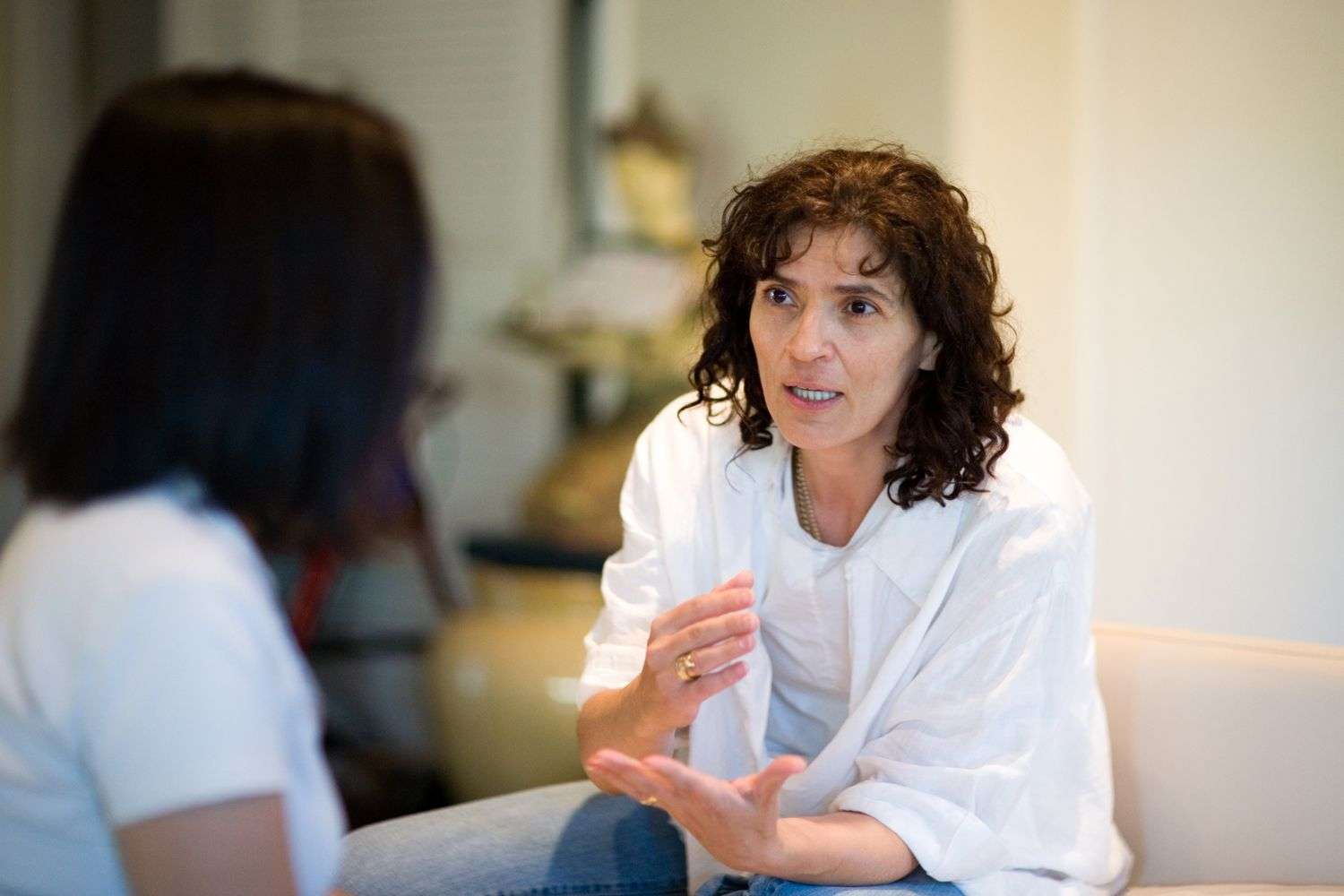Cognitive-behavioral treatments are the cornerstone of therapy for people with borderline personality disorder. Different types of cognitive-behavioral therapy, including two unique types that are used to help those specifically with BPD, can help people adopt healthy coping skills and achieve a good quality of life.
What Is Cognitive-Behavioral Therapy?
Cognitive-behavioral therapy (CBT) is a type of psychotherapy that targets the “cognitive” (thinking-related) and “behavioral” (action-related) aspects of a mental health condition.
The goal of CBT is to help you to reduce your symptoms by changing the way you think about or interpret situations, as well as the actions that you take in your daily life.
What to Expect From Cognitive-Behavioral Therapy
CBT is very focused on the present, meaning that you do very little talking about your past. While you may talk to your therapist about how you came to think or behave the way you do, most of the therapy is focused on how your current ways of thinking/acting are related to your symptoms, and how to change these patterns.
CBT is also fairly directive, meaning that your therapist will often take an active role in your therapy session, giving you direct advice and guidance.
Because cognitive behavioral therapists operate under the assumption that your symptoms are in part related to patterns of thinking and behaving that you have learned over the course of many years, they believe that one or two hours of therapy each week will not produce any major change.
For this reason, most CBT therapists assign homework—they want you to work to change the patterns outside of the therapy session. So don’t be surprised if you leave your CBT therapy session with handouts to read and homework sheets to complete.
CBT for BPD
While the basic principles of CBT can be helpful for people with borderline personality disorder (BPD), some experts have noted that the disorder requires specialized CBT techniques. Two unique cognitive-behavioral therapies that have been designed specifically for BPD are:
Both dialectical behavior therapy (DBT) and schema-focused therapy have been shown to be effective in reducing BPD symptoms. DBT consists of both individual and group therapy sessions, as well as phone coaching sessions, where a person with BPD focuses on behavioral skills like:
- Achieving mindfulness—paying attention to the present or living in the moment
- Regulating emotions
- Tolerating distress or conflict
- Navigating relationships with other people
- Achieving motivation to avoid unhealthy coping skills, like self-harm
Schema-focused therapy is based on the idea that personality disorders like BPD develop as a result of maladaptive thoughts or behaviors early on in life. People then develop unhealthy coping skills, like avoidance, to avoid triggering those thoughts or behaviors.
Schema-focused therapy is not like traditional cognitive-behavioral therapy in that it’s more flexible and attuned to a person’s emotions. It also requires a longer treatment period, ranging from one to four years.
Finding a Cognitive Behavioral Therapist
While CBT has been around for decades, it can be difficult to find a therapist who has been trained in this approach. If you are interested in finding a CBT therapist in your area, try the Association for Behavioral and Cognitive Therapy’s Find-a-Therapist Directory.
If you are interested in finding a Dialectical Behavior therapist, try the Behavioral Tech Clinical Resources Directory. It’s also a good idea to speak with your primary doctor or psychiatrist for a referral to ensure this is the right treatment plan for you.
 Borderline personality disorder (BPD) affects the way you think and feel about both yourself and others, which can cause problems in your everyday life. BPD is characterized by a pattern of instability in relationships, an intense fear of abandonment, wide mood swings, impulsive behavior, feelings of emptiness and frequent suicidal thoughts or actions.
Borderline personality disorder (BPD) affects the way you think and feel about both yourself and others, which can cause problems in your everyday life. BPD is characterized by a pattern of instability in relationships, an intense fear of abandonment, wide mood swings, impulsive behavior, feelings of emptiness and frequent suicidal thoughts or actions.
While the intensity and unpredictability of the symptoms of BPD are sometimes challenging to treat, that doesn’t mean that BPD isn’t treatable. Symptoms can improve over time with treatment. The main treatment of BPD is psychotherapy, also known as talk therapy. Two of the forms of psychotherapy that are often used in treating BPD are cognitive behavior therapy (CBT) and dialectical behavior therapy (DBT).
For More Information About our BPD Treatment Center
Call (855) 409-0204 Now
CBT is one of the most frequently practiced forms of psychotherapy. This form of therapy strives to help you learn how your thoughts affect your feelings and behaviors. CBT uses reasoning and critical thinking to help you see your problems in a logical way.
By using this approach, you’ll work with your therapist on recognizing and reducing self-defeating thoughts and behaviors. This can help you to respond to day-to-day challenges in healthier ways and with less reactivity. This type of therapy works to change behaviors, which can help to change mood and thoughts.
DBT was designed specifically to treat people with BPD. It’s a form of CBT that focuses on skills like tolerating distress, regulating your emotions, living in the present and managing your interactions with others. It aims to help you change your behavior patterns rather than trying to think or talk through issues that are causing problems in your life.
If you’re being treated with DBT, you’ll participate in different settings, including individual therapy, learning new skills in a classroom environment and phone coaching. Therapists meet with a consultation team to work on finding solutions for complex issues. DBT includes four main strategies:
- Mindfulness – This is skill that helps you to stay focused on the present moment, which can help you to reduce rumination and alter your ability to process and solve problems.
- Distress tolerance – You’ll learn skills to help you accept your current situation and tolerate uncomfortable feelings while you work toward resolving problems.
- Emotional regulation – This is a method of recognizing and coping with negative emotions to help reduce or prevent potentially destructive or harmful behaviors.
- Interpersonal effectiveness – You’ll learn how to express and assert your needs without being aggressive.
Differences Between CBT and DBT
CBT and DBT share some common characteristics. Both acknowledge that thoughts influence feelings, which in turn affect behavior. Both require a good relationship between patient and therapist for it to be effective.
DBT recognizes that those with BPD sometimes don’t feel validated or that their emotions seem to be minimized. If this happens, patients end up quitting therapy. DBT adds acceptance and validation to help you accept your feelings as real and valid. When your therapist also accepts your feelings as valid, it helps to build trust in the relationship, so you can work toward a balance between acceptance and change. DBT has been found to be very effective for people who are suicidal or self-harm, because it offers coping skills that work in many different situations.
Choosing the Best Form of Psychotherapy to Treat BPD
Different people respond differently to each type of therapy, so a psychotherapist trained in treating BPD will consider your personality and the nature of the problems being treated when choosing a form of therapy that is likely to be most helpful to you. Both CBT and DBT have been found to be helpful for people who are struggling with BPD.
DBT is a modified form of CBT that uses many of the same cognitive-behavioral skills that are used in traditional CBT. If you have BPD and have found that CBT isn’t as effective as you and your therapist have hoped it will be, the skills learned in DBT can be very effective in teaching ways to cope. Learning to manage your emotions and behaviors using either CBT or DBT can be done but takes time, and is most effective when you obtain treatment from a therapist who has training and experience in treating BPD.
If you or a loved one are struggling with Borderline Personality Disorder or another mental health disorder, please contact us at (855) 409-0204 or submit the form below and a treatment specialist will contact you.
If you have borderline personality disorder, you have probably heard of both cognitive-behavioral therapy and dialectical behavior therapy. Are these modes of treatment different or simply variations of each other? Let’s take a closer look at these types of behavioral therapies and how they are related.
Cognitive Behavioral Therapy
Cognitive-behavioral therapy, or CBT, is a form of therapy that aims to restructure and change the way a person thinks and behaves. Whether or not this therapy is beneficial depends strongly on the relationship between the individual and their therapist. The individual’s willingness to make a change is also a crucial factor.
Examples of techniques used by a cognitive-behavioral therapist include cognitive restructuring and behavioral changes, like reducing self-defeating behaviors and learning how to respond to problems in a healthy, adaptive manner. In cognitive restructuring, a patient is taught to identify negative reactive thoughts and modify them.
Dialectical Behavior Therapy
Dialectical behavioral therapy, or DBT, is a modified type of CBT that was uniquely developed to treat borderline personality disorder. This approach is called “dialectical” because it involves the interaction of two conflicting ideas, which are that improving the symptoms of BPD involves both acceptance and change.
It focuses on skills like mindfulness or living in the present, regulating emotions, tolerating distress, and effectively managing relationships with others. DBT is the only empirically supported treatment for borderline personality disorder.
DBT is composed of four elements that the individual and therapist usually work on over a year or more:
- Individual DBT therapy, which uses techniques like cognitive restructure and exposure to change behavior and improve quality of life.
- Group therapy, which uses skills training to teach patients how to respond well to difficult problems or situations.
- Phone calls, which focus on applying learned skills to life outside of therapy.
- Weekly consultation meetings among the DBT therapists, which offer a means of support for the therapists and to ensure they are following the DBT treatment model.
This type of therapy focuses on some of the common symptoms of BPD including impulsivity, exaggerated mood changes, unstable relationships, poor sense of self, and the fear of abandonment. DBT also helps people with BPD work on skills such as being able to tolerate distress, regulating emotions, and effective interpersonal behavior.
One major focus on DBT is to help people learn how to deal with powerful emotions and learn new ways of coping with strong feelings without resorting to unhealthy coping mechanisms. Distress tolerance, for example, centers on helping people recognize and accept painful feelings without engaging in harmful behaviors like self-harm.
How to Decide Which BPD Treatment Is Right for You
If you have borderline personality disorder, there are treatments that can help you manage your condition. Please speak with your doctor about finding the right therapist and treatment model for you so you can feel better and improve your quality of life.
Borderline Personality Disorder Discussion Guide
Get our printable guide to help you ask the right questions at your next doctor’s appointment.
:max_bytes(150000):strip_icc()/illo_Doctor-discussion-guide-mind-08-5c60ad2a46e0fb000158767e.png)
Download PDF
Differences Between Dialectical Behavioral Therapy and Cognitive Behavioral Therapy
DBT is simply a modified form of CBT that uses traditional cognitive-behavioral techniques, but also implements other skills like mindfulness, acceptance, and tolerating distress.
CBT
-
Helps patients change how they think/behave
-
Patients learn how to manage negative emotions
-
Can be used in the treatment of many disorders
DBT
-
A type of cognitive-behavioral therapy
-
Incorporates other skills (e.g., mindfulness)
-
Specifically treats borderline personality disorder
The good news is that DBT has been found to be considerably more effective in treating people with borderline personality disorder.
Dialectical behavioral therapy is recommended as a first-line treatment for borderline personality disorder and has been shown to reduce the need for medical care and medications by as much as 90%.
It’s interesting to note that some cognitive-behavioral therapists incorporate certain elements of the DBT model into their treatment sessions. Also, other forms of CBT have developed that use the elements of DBT. For instance, mindfulness-based cognitive therapy utilizes traditional cognitive-behavioral techniques with mindfulness to treat depression.
The Best Online Therapy Programs
We’ve tried, tested and written unbiased reviews of the best online therapy programs including Talkspace, Betterhelp, and Regain.



